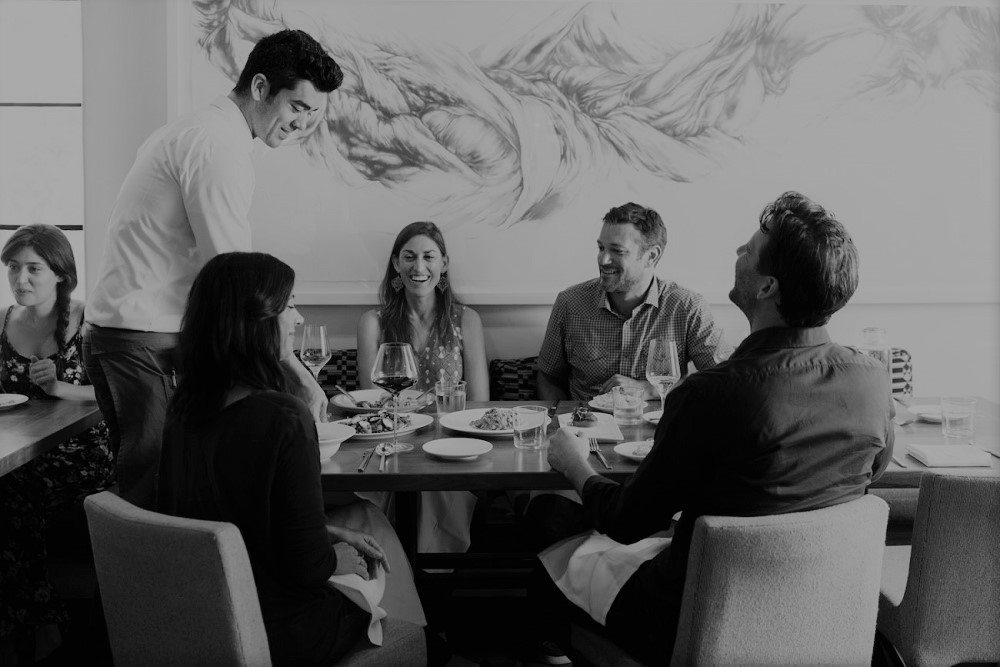Managing Restaurant Customer Emotions Using Touch Points
Originally Posted on Resto Biz – By Doug Radkey 04/27/2017
The restaurant industry is driven by delivering exceptional (and memorable) customer experiences. As a restaurateur, you need to realize that you don’t just sell food and beverage, you sell emotions through experiences. Your concept, whether a restaurant, bar, cafe or food truck, lives or dies by the customer emotions it creates.
To create emotions and deliver on your promise for memorable customer experiences, a concept must think through its initial design while utilizing processes, maximizing communication and creating surprises through a multitude of ‘touch points.’
If you’re just starting out or if you’re already operating, there are areas you must audit – from the view of the customer, to ensure you’re driving these required positive emotions.

Design Points
From the planning stage, a variety of factors need to be carefully addressed. These three areas can make-or-break a brand’s perception in a matter in seconds by delivering a negative or positive emotional reaction.
First impressions count, and it all starts with your entrance. What reaction will customers have when they walk up to and into your establishment?
You need to ensure you’re creating a sense of hospitality with concept-driven decor, accessible doorways and a quick, warm welcome.
Next, over 70 per cent of customers equate restroom cleanliness with the cleanliness of the kitchen. Carefully consider the positioning and visibility of your restrooms in regards to waiting areas, dining areas and the kitchen.
You also need to invest in sound acoustics in addition to scent management systems, while implementing a restroom cleaning schedule throughout each working day.
Lastly, the lighting in your establishment cannot be overlooked. A carefully thought out lighting plan will increase security, boost sales (yes, that’s true), and set the overall mood that your brand is ultimately seeking.
Lighting will, in fact, dictate how long customers spend at your property so it is imperative your lighting choices match that of your brand strategy.
Process Points
Processes, or systems, are the backbone to a successful restaurant. Memorable design, impeccable flavours and a fantastic server is still not enough. Having the right processes in place will develop consistency, which is a key component in developing positive emotions and word-of-mouth marketing.
FOH (Front-of-House) and BOH (Back-of-House) systems take effort, training and accountability. You must ensure you have HR management, inventory management, financial systems, preparation lists, operational checklists, and quality control measures in place. A customer will quickly pick up on an unorganized restaurant which will generate negative word-of-mouth.
Next, walk through the typical service sequence at your restaurant. From walking in, to sitting down, to placing orders, to the delivery of food and beverage – what is the customer experiencing? What are they visualizing, touching, smelling and hearing throughout each touch point?
Lastly, once the meal or order is complete, what is the exit sequence and payment process like for the customer? How long are they waiting, what payment options are available to them (think modern technology), and how will they remember you as they leave?
Is there a thank-you or ‘exit strategy’ in place?
Communication Points
A smooth operating restaurant requires fluent communication from and between not only the management, host, bartender, server, cook and chef, but also the customer. How are the following touch points affecting your customer emotions?
Walk through the process of placing a phone call, placing an online order, making an online reservation, or leaving a comment on social media for example. What emotions are you generating? How long do the processes take? What information is gathered and where is it stored? How long until there is a confirmed reply? Are there areas you can improve to deliver a quick, positive emotion?
Secondly, team communication among your staff affects morale which ultimately affects the customer of your restaurant, and your bottom line. How is the communication between FOH and BOH at your restaurant? What is your in-house process to address a customer complaint or even a question regarding an ingredient while at the table with a customer? How long does it take to resolve and who needs to be involved? What measures can be put in place to expedite the communication process?
Lastly, what messages are you communicating through your marketing channels?
What type of brand image are you portraying on social media, within your menu, on your website, and other advertising? Are the messages consistent and is the copywriting professional on quality material or images? What type of emotion does your marketing effort develop? Does it match your intended brand identity?
Surprise Points
Everyone loves a surprise, right? What expectations are you creating for your customers? What type of events are you generating? Are these events leaving positive, memorable emotions? Consider these emotions the next time you’re planning an event.
Next, what type of reaction are you receiving when you deliver a dish or creative cocktail to a customer? Are you maximizing the wow factor by offering a surprisingly high-quality visual presentation and taste? What can you do with your menu items to stand out from similar concepts in your area?
Finally, consider testing all of your touch points through implementing a monthly or quarterly secret shopper program to receive unbiased reviews while holding the entire team accountable.
By creating positive emotions through design, systems, communication and training, you will undoubtedly increase spending and return visits – which is, of course, your day-to-day goal!
